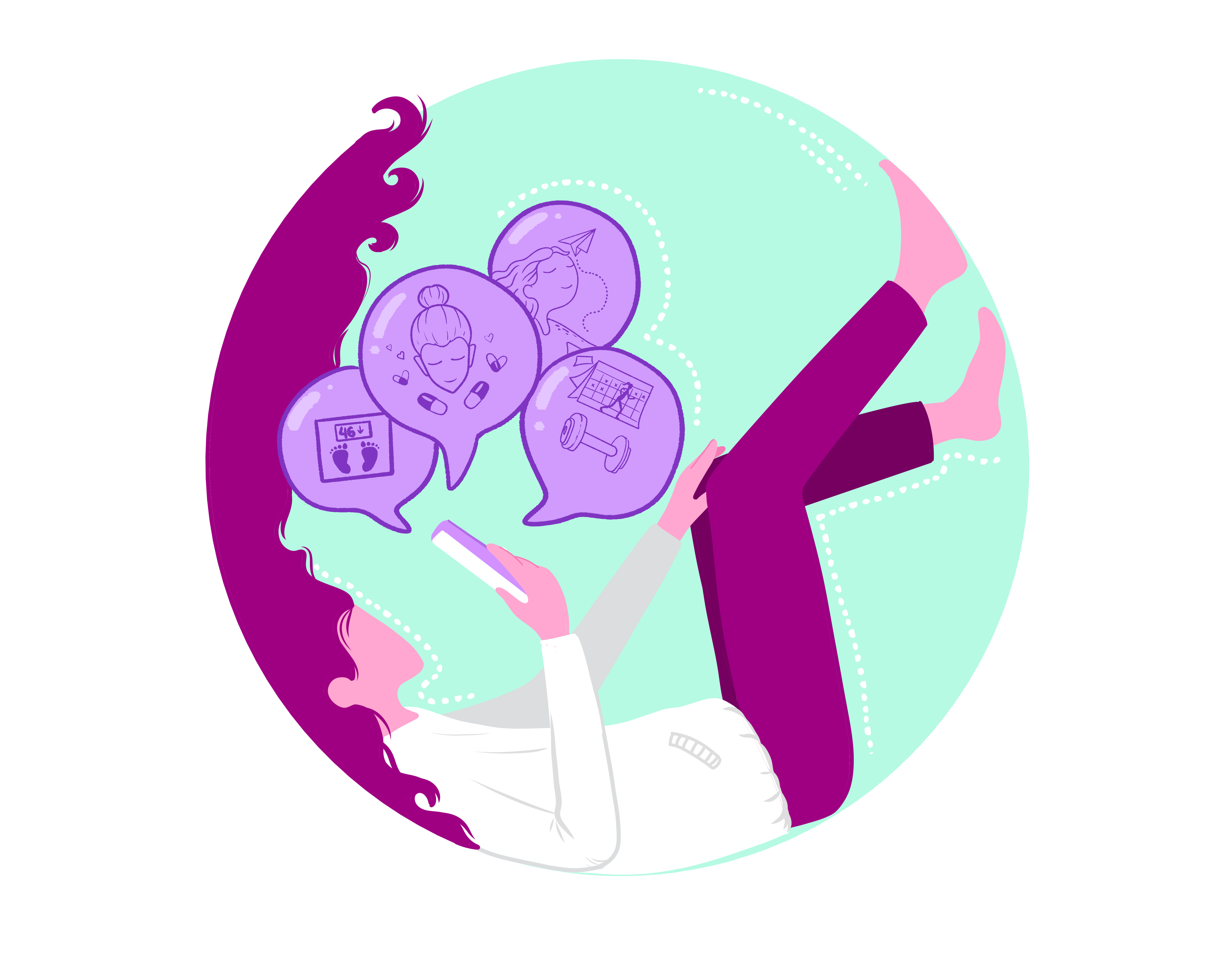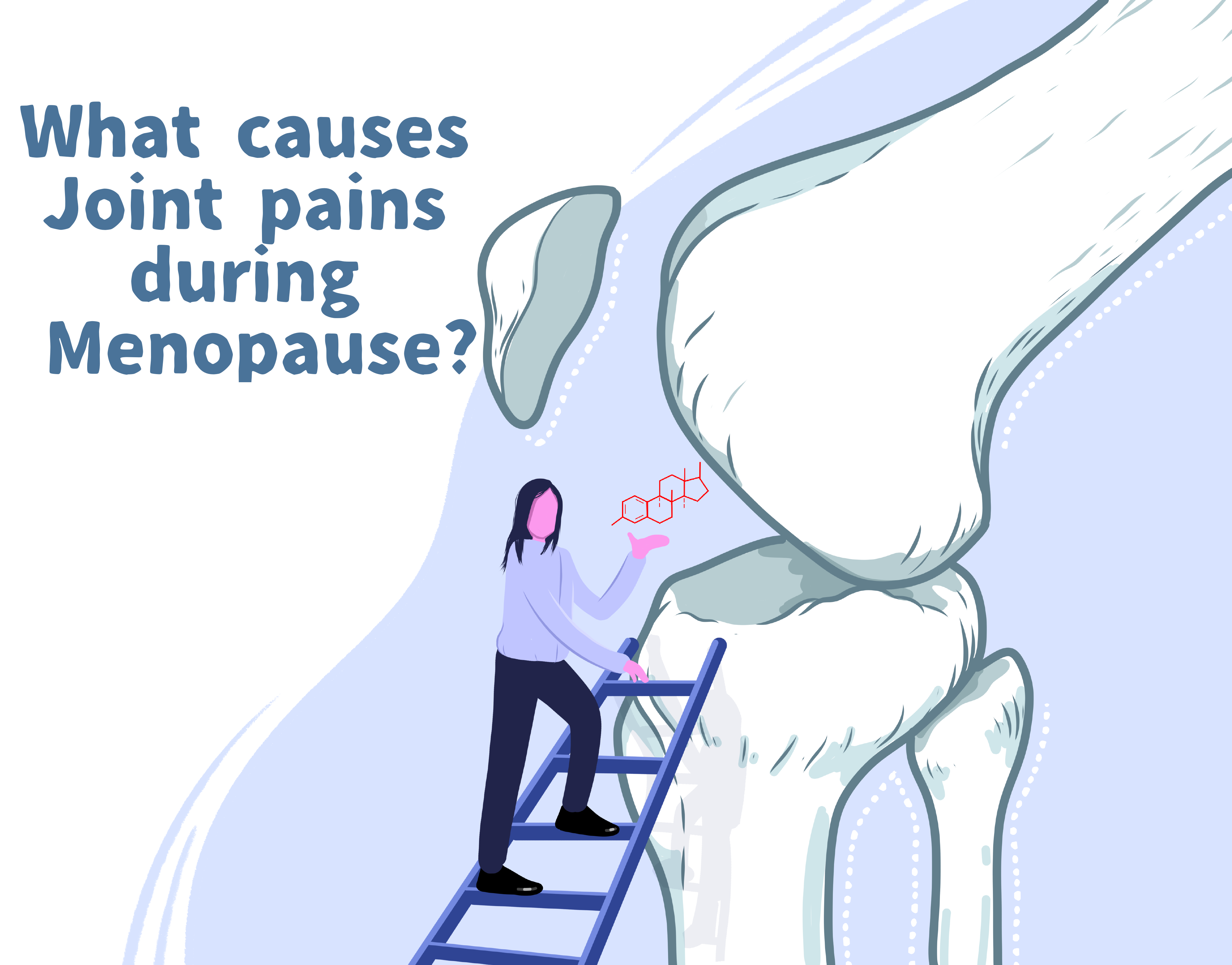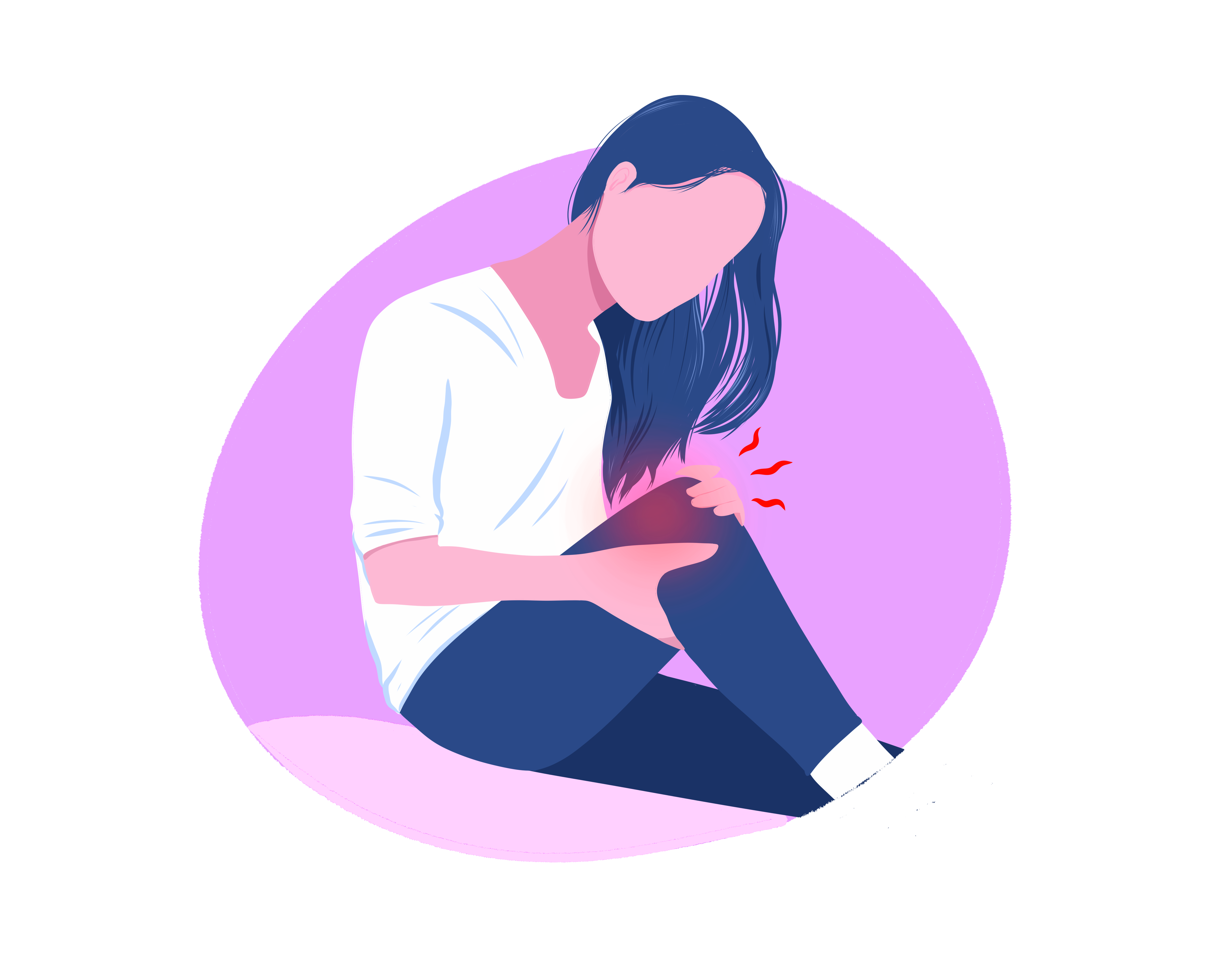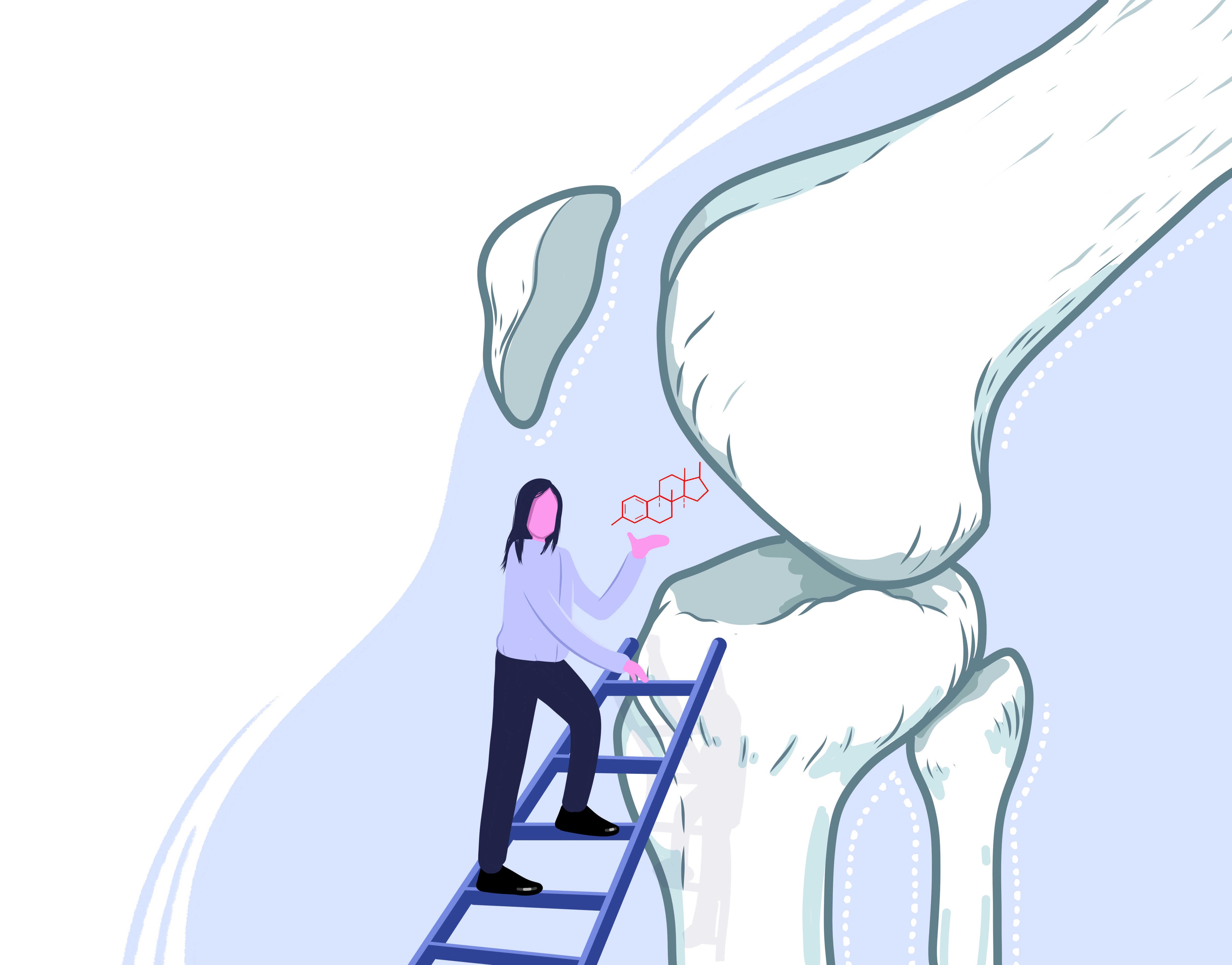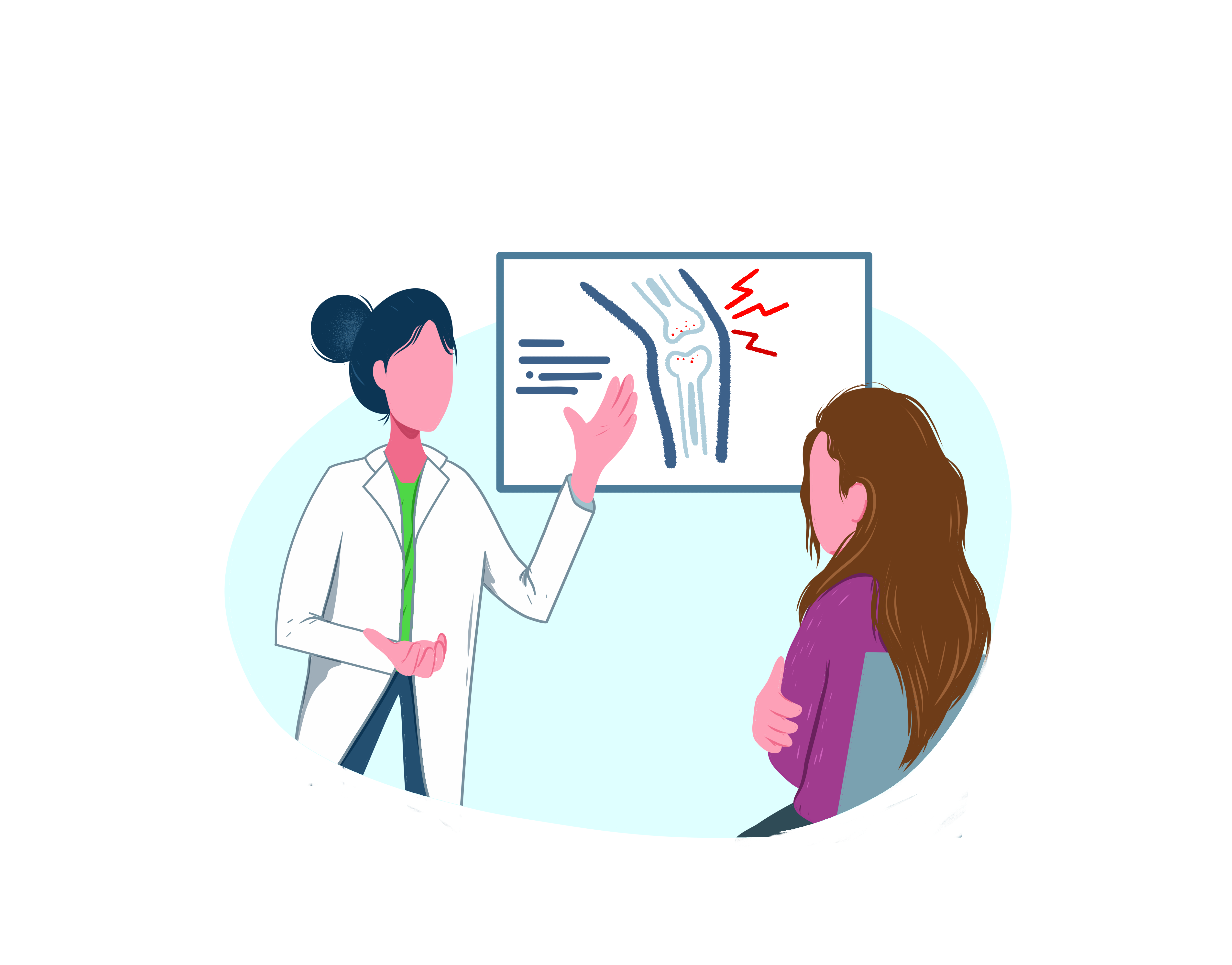Menopausal joint pain is characterised by joint soreness and is caused mostly by a decline in oestrogen levels, which frequently leads to an increased risk of musculoskeletal injury and faster bone and muscle loss.
Oestrogen levels dropping during menopause has been related to a higher risk of osteoarthritis (OA) and stiffness in the joints developing or getting worse. Joint pains impact 50% or more of menopausal women and can be effectively managed with a combination of lifestyle changes, medication, and alternative therapy.
What is Menopausal Joint Pain?
Menopausal joint pain, also known as menopausal arthralgia, is a symptom of menopause that is characterised by pain, stiffness, or discomfort in the joints. The shifting hormone levels, particularly the decline in oestrogen, has a substantial impact on joint health as women approach menopause. These pains are frequently observed in joints such as the neck, shoulders, elbows, and knees.
Menopausal status, BMI, work status, and depressed mood were all connected with the feeling of troublesome aches and stiff joints, according to a study undertaken by Szoeke et al from the Department of Psychiatry, University of Melbourne. Aches and stiff joints are frequent in postmenopausal women, but they do not always indicate radiological osteoarthritis.
While menopausal joint pain is a well-known complaint, understanding its underlying causes, which include but are not limited to hormonal changes, is essential. Speak with us at OMC so our highly-experienced female doctors and nurses can further review your condition and give you professional advice.
In the following sections we’ll further explore the factors that contribute to joint pain and explore some research to better help you understand the ins and outs of this symptom.
